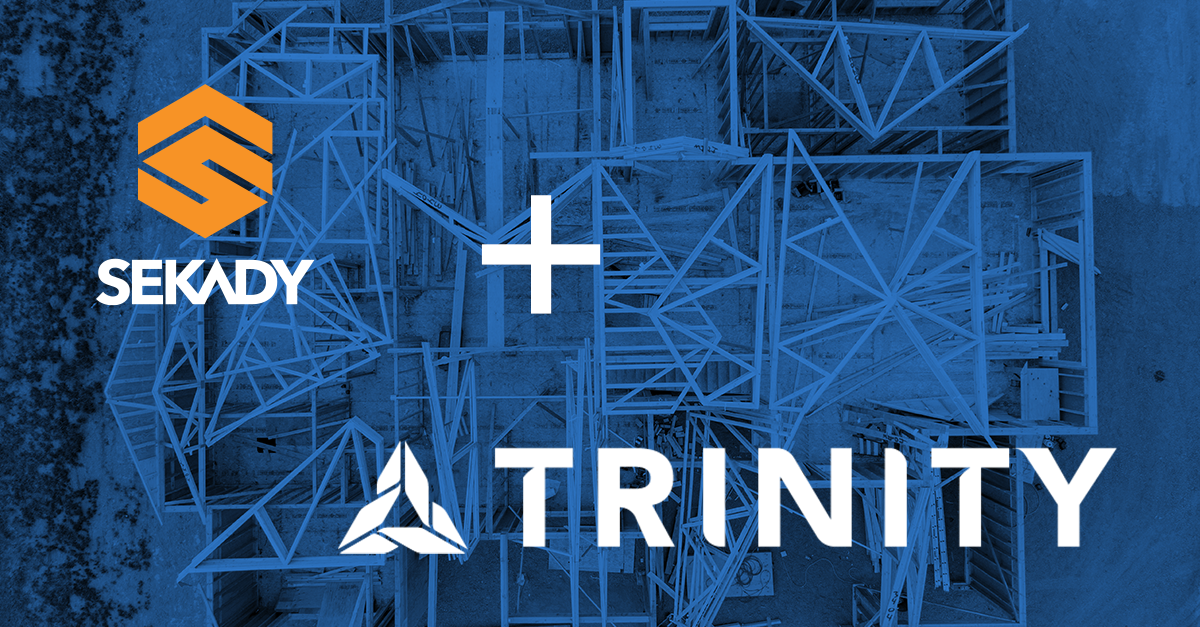A draw inspection is a site visit by a lender's inspector to verify work claimed in a draw request is actually complete and meets quality standards before funds are released. Inspectors review completed work against contractor's invoice and plans, take photos, and report findings. Most construction loans require inspections before each major disbursement to protect the lender and borrower.
Draw Inspections Explained: The Foundation of Construction Loan Verification
Draw inspections are where construction lending theory meets reality. They're the moment when what the contractor claims has been completed is verified by an independent third party.
What is a Draw Inspection?
A draw inspection is an on-site visit by a qualified inspector employed by the lender (or contracted third-party) to verify that work described in a draw request is actually complete and meets quality standards.
The core question an inspector answers: "Has the work claimed in this draw request actually been completed to the standard described in the contract and construction plans?"
Why Draw Inspections Are Essential
Construction lending involves risk. A lender gives a borrower significant capital. The lender's security is the property being built. If the borrower takes the money and doesn't actually build, the lender loses their security.
Draw inspections mitigate this risk by creating objective verification that work is happening and the property is increasing in value with each draw.
Who Performs Draw Inspections?
| Inspector Type | Background | Pros | Cons |
|---|---|---|---|
| Lender's own | Employed by lending company | Consistent standards | Expensive to employ |
| Third-party | Independent inspection company | Scalable; objective | May not know specifics |
| Construction consultant | Experienced professional | Deep knowledge | Expensive; limited availability |
| GC's QA person | Contractor's own staff | Fast; understands work | Conflict of interest |
Best practice: Use a third-party inspection company. They're independent, scalable, and specialize in lending inspections.
What Draw Inspections Actually Involve
Before the Inspection:
- Inspector reviews draw request
- Reads contractor's claims
- Reviews construction plans
- Reviews contractor's photos
- Identifies what needs verification
During the Inspection:
- Inspector visits site systematically
- Verifies work is complete
- Compares against plans
- Takes multiple photos
- Looks for quality issues
- Notes discrepancies
What's Verified by Milestone:
| Work | Inspector Focus |
|---|---|
| Foundation | Dimensions, concrete cure, reinforcing placement, grading |
| Framing | Lumber grade/size, connections, spacing, loading paths |
| Electrical | Wire routing, box heights, proper gauge, bonding |
| Plumbing | Pipe sizing, slope, leaks, supports, vents |
| HVAC | Duct sealing, crushing, support, thermostat location |
| Drywall | Attachment, seams, damage, cutouts |
| Final | Systems operational, finishes acceptable, no defects |
The Inspection Report
A good inspection report includes:
- Date, time, inspector credentials
- Project identification
- Contractor presence during inspection
- Weather conditions
- % claimed by contractor vs. % verified by inspector
- Comprehensive photos
- Discrepancies noted
- Quality issues identified
- Change orders verified
- Inspector's recommendation
- Inspector's signature
This report becomes the permanent loan file record.
Common Inspection Discrepancies
Discrepancy 1: Contractor claims 100% complete; inspector verifies only 90%
- Result: Draw capped at 90%. Contractor must finish remaining work before next draw.
Discrepancy 2: Quality issues discovered
- Result: Inspector recommends withholding draw until quality improves.
Discrepancy 3: Work doesn't match plans
- Result: Reject draw pending change order approval.
Discrepancy 4: Prior code inspections missing
- Result: Withhold draw until code inspection completed.
How Technology Enhances Inspections
Mobile Inspection Apps:
- Geotagged photos (proves location)
- Timestamped photos (proves when)
- Structured checklists
- Real-time reporting
- Automatic notifications
Digital Photo Documentation:
- Tamper-proof images
- Organized by phase
- Compared side-by-side with contractor's photos
Real-Time Reporting:
- Lender notified immediately
- Can review findings same day
- Can communicate with inspector if clarification needed
Integration with Loan System:
- Inspection findings auto-populate draw file
- Inspector's percentage auto-compared to contractor's claim
- Discrepancies auto-flagged
The Inspection Timeline
Traditional Process: 11 days
- Day 1: Work complete
- Day 2: Request inspection
- Day 5: Inspector available
- Day 7: Inspector visits and reports
- Day 9: Lender reviews
- Day 10: Approved
- Day 11: Payment initiated
Modern Automated Process: 1.5 days
- Day 1, 2 PM: Work complete, draw submitted
- Day 1, 3 PM: Inspection scheduled
- Day 2, 10 AM: Inspection completed
- Day 2, 11 AM: Lender reviews and approves
- Day 2, 2 PM: Payment initiated
Best Practices for Draw Inspections
- Create detailed inspection checklist for each milestone
- Provide construction plans to inspector
- Include contractor's photos in inspection file
- Require daytime inspections
- Have contractor available during inspection
- Require comprehensive photo documentation
- Establish clear escalation procedures
- Use digital inspection tools
Inspection Disputes: Prevention and Resolution
Dispute: "Inspector said work is only 80% complete, but we think it's 95%"
Prevention:
- Create detailed, specific milestone definitions
- Both inspector and contractor understand definitions
- Share definitions with all team members
Resolution:
- Have contractor explain their view
- Have inspector explain their verification
- Schedule follow-up inspection if needed
- Bring in third-party expert if unresolved
- Make decision based on code/contract requirements
Inspection Costs and ROI
Third-party inspection companies charge:
- $200-$500 per inspection (residential)
- $500-$1,500 per inspection (commercial)
- Based on location, travel, complexity
For a $500,000 project with 5 inspections: $1,500-$2,500 total
ROI Calculation:
- Inspection costs: $2,500
- Average inspection prevents over-funding: $10,000-$50,000
- Return: 400%-1,900%
Inspections pay for themselves many times over through risk prevention.
Conclusion: Draw Inspections Are Your Risk Control
Draw inspections make construction lending possible. Without them, lenders have no way to verify work is happening. With inspections, lenders can disburse capital with confidence.
Article 7: How to Schedule Construction Loan Draw Disbursements Efficiently with Software
Quick Answer (40-60 words): Scheduling draw disbursements efficiently with software means automating the entire pipeline from milestone tracking through fund release so draws happen on time without manual coordination. Choose integrated software, build reusable templates, set milestone thresholds, automate inspector notifications, enable mobile inspections, configure approval workflows, and monitor with dashboards.
Mastering Construction Draw Scheduling: The Software Strategy
Construction draw scheduling is where planning meets execution. Get it right and projects stay funded and move smoothly. Get it wrong and you're juggling spreadsheets and managing frustrated contractors.
The difference between chaos and control is software designed for construction draw scheduling.
Why Traditional Draw Scheduling Fails
Most construction lenders still manage draw schedules manually:
- Master spreadsheet with all projects
- Manual tracking of what's been paid
- Email reminders to contractors
- No real-time visibility
- Information constantly out of sync
- Cascading delays
Problems that result:
- Spreadsheets get out of sync
- Constant manual work required
- Delays compound
- Poor visibility into what's happening
The 7-Step Framework for Efficient Draw Scheduling
Step 1: Select Integrated Software
Choose a platform specifically designed for construction lending that integrates with tools contractors use.
Critical features:
- Project Management Integration (Procore, Touchplan)
- Real-Time Data Sync
- Mobile-First Design
- Customizable Draw Templates
- Automated Approval Routing
- Payment Integration
- Comprehensive Reporting
Step 2: Build Your Draw Schedule Templates
Create templates for common project types reusing them repeatedly.
Template includes:
- Number of draws
- Milestone definitions
- Draw amounts (% of budget)
- Timeline targets (days between draws)
- Retainage percentage
- Required documentation
- Approval process
Step 3: Set Up Milestone Thresholds
Be specific about milestone definitions. Vague definitions create disputes.
Bad: "Framing complete" Good: "Framing 100% complete means all load-bearing walls fully framed per plans, all ceiling joists installed, all roof trusses installed and braced, all sheathing installed, all windows and doors set"
Step 4: Automate Inspector Notifications
When draw request submitted:
- System identifies qualified inspectors
- Checks availability
- Auto-assigns inspector
- Sends notification with project details
- Result: Inspection scheduled within 24 hours (vs. days of phone tag)
Step 5: Enable Mobile Inspection Workflows
Inspectors complete work in field:
- Access project info offline
- Geotagged photos (proves location)
- Timestamped documentation
- Structured checklists
- Real-time sync
- Digital sign-off
- Result: Inspection reports arrive instantly (vs. days after return to office)
Step 6: Configure Smart Approval Routing
| Draw Type | Approval Route | Time |
|---|---|---|
| Routine | Auto-approve | Same day |
| Minor variance | Single approver | 1 day |
| Material variance | Credit committee | 2-3 days |
| Budget issue | Hold pending change order | Variable |
| Missing docs | Hold until provided | Variable |
Result: 80% of draws process in one day; complex draws get appropriate review.
Step 7: Monitor with Real-Time Dashboards
Dashboard views:
- Portfolio overview (all projects at glance)
- Project-level view (each project's draws)
- Draw pipeline (every draw's status)
- Inspector performance (speed, quality)
- Payment status (confirmations, issues)
Complete Draw Scheduling Workflow
Contractor reports milestone complete
↓
Contractor submits draw request
↓
System validates documentation
↓
System checks budget
↓
System automatically schedules inspection
↓
Inspector confirmed within 24 hours
↓
Inspector visits next day, completes work
↓
Inspector submits report from site
↓
System routes to appropriate approver
↓
Approver reviews (routine draws: 30 min)
↓
System initiates payment automatically
↓
Payment clears (1-2 days depending on method)
↓
Contractor receives funds
↓
System updates ledger automaticallyTimeline: 3-5 business days submission to funded (Compare to manual: 15-30 days)
Implementation Roadmap
Phase 1 (Weeks 1-2): Foundation
- Choose platform
- Create draw templates
- Define milestone descriptions
- Document approval process
Phase 2 (Weeks 3-4): Integration
- Integrate with project management system
- Integrate with accounting
- Integrate with payments
- Set up inspector network
Phase 3 (Weeks 5-6): Pilot
- Launch with 2-3 new projects
- Train contractors
- Train staff
- Refine configuration
Phase 4 (Week 7+): Rollout
- Deploy to all new projects
- Migrate existing projects gradually
- Optimize based on performance
Key Metrics
| Metric | Target |
|---|---|
| Time from submission to funded | 3-5 days |
| Draw submission rate | 95%+ on schedule |
| Inspection cycle | 24 hours |
| Approval cycle | 1 day |
| Draw accuracy | 0% requiring corrections |
| Contractor satisfaction | 4.5+/5 |




